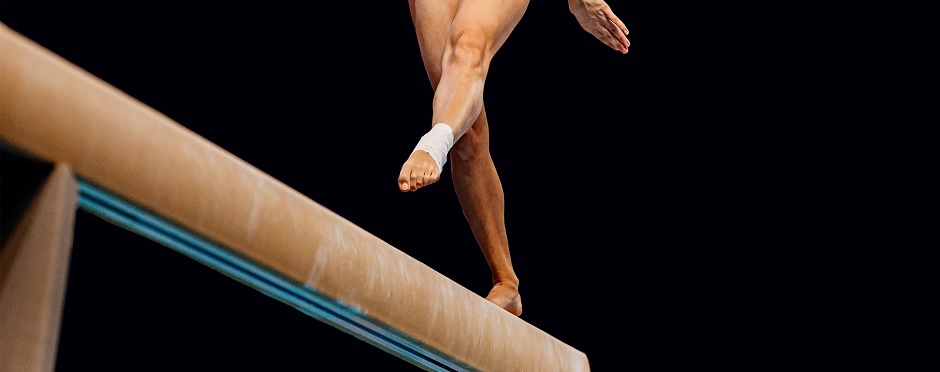
Shin Splints in Gymnasts
Leave a CommentMedial Tibial Stress Syndrome is more commonly known as “Shin Splints.” This syndrome describes pain on the front and side of the shin bone in the lower leg. Shin splints are common in running and jumping athletes including gymnasts who run and tumble frequently.
What Are Shin Splints?
Shin splints are thought to be caused by repetitive stress applied to the tissues of the lower leg. Shin splints develop over time rather than from a single incident. Symptoms include pain along the front of the shin bone (tibia) as well as tenderness along the bone or muscles along the bone. Pain worsens with activity, especially running and jumping, and swelling may occur.
Causes of Shin Splints:
- An increased number of repetitions
- Overtraining
- Recent increase in training
- Poor mechanics
- Training surface
- Poor footwear
- Muscle or strength imbalances
Special Considerations for Gymnasts
Gymnasts are at more risk for shin splints due to several factors. First, they train barefoot; therefore the muscles in the foot and lower leg have to work harder to stabilize without a shoe. Second, their tumbling skills occur from a higher height than the average runner (several feet vs. several inches in running). With this consideration, the force traveling through a gymnasts foot and lower leg is much greater, usually several times their body weight.
Treatment of Shin Splints:
- Use of ice after activity
- A bag of ice with a towel protecting the skin can be applied for 10 minutes to help with pain and swelling. An ice cup is also an option. Freeze a small paper cup, remove a portion of the paper and rub the ice in a circular pattern for 5-10 minutes over the area until it is numb.
- Perform calf stretches
- Stretching the back of the calf can help take strain off the front of the leg. Place one foot back, ensure the heel stays on the ground and lean forward onto the front leg until a stretch is felt in the calf. Hold for 30 seconds and perform 3 times per leg after workouts.
- Use of proper footwear outside of the gym
- Gymnasts train barefoot however proper shoes outside of the gym can help with recovery from shin splints. Sneakers with good cushion and a sole are preferred. Flip flops, boots, and flats without arch support are not ideal as they do not support the foot or help absorb shock when walking around home or school.
- Gradual progression of skills and length of practice
- After any break in practice for gymnastics, a gradual return is recommended to allow your body time to adjust. If adding new skills, make sure to limit repetitions to slowly build your tolerance.
- Listen to your body
- Pain is your body’s way of telling you something is not right. Do not push through the pain. Tell your coach and parents about your pain so they can help come up with a plan to keep you healthy and able to practice as much as possible.
Physical Therapy Can Help Treat Shin Splints
Seeking help from a physical therapist can aid in the treatment of shin splints. A physical therapist will evaluate the entire lower quarter of your body to ensure adequate strength, flexibility and balance throughout to get you back to your sport as quickly and safely as possible. A physical therapist will design an individualized program including massage, stretching, strengthening, balance training, and muscle re-education to decrease pain and reduce injury re-occurrence.
To get started, schedule a free assessment with one of our experts. Free assessments are available in-clinic and virtually through our telehealth platform.
Physical therapy is usually the thing you are told to do after medication, x-rays or surgery. The best way to fix your pain is to start where you normally finish – with physical therapy at Athletico. Schedule a free assessment in-clinic or virtually through a secure online video chat where our team can assess your pain and provide recommended treatment options.
The Athletico blog is an educational resource written by Athletico employees. Athletico bloggers are licensed professionals who abide by the code of ethics outlined by their respective professional associations. The content published in blog posts represents the opinion of the individual author based on their expertise and experience. The content provided in this blog is for informational purposes only, does not constitute medical advice and should not be relied on for making personal health decisions.
